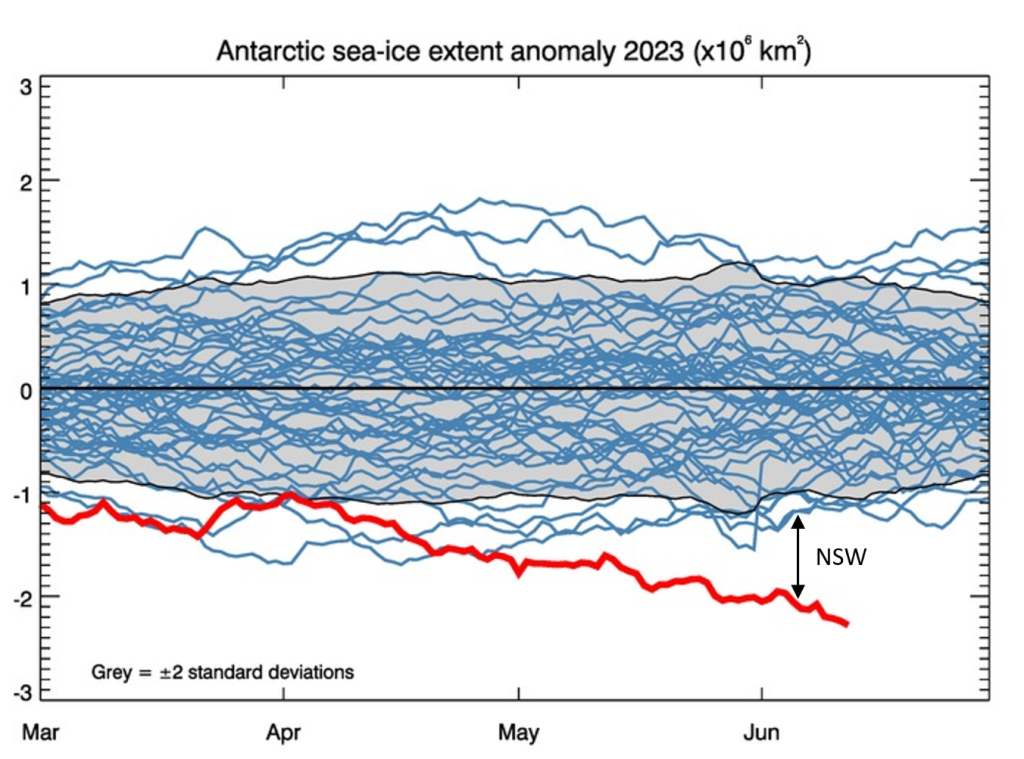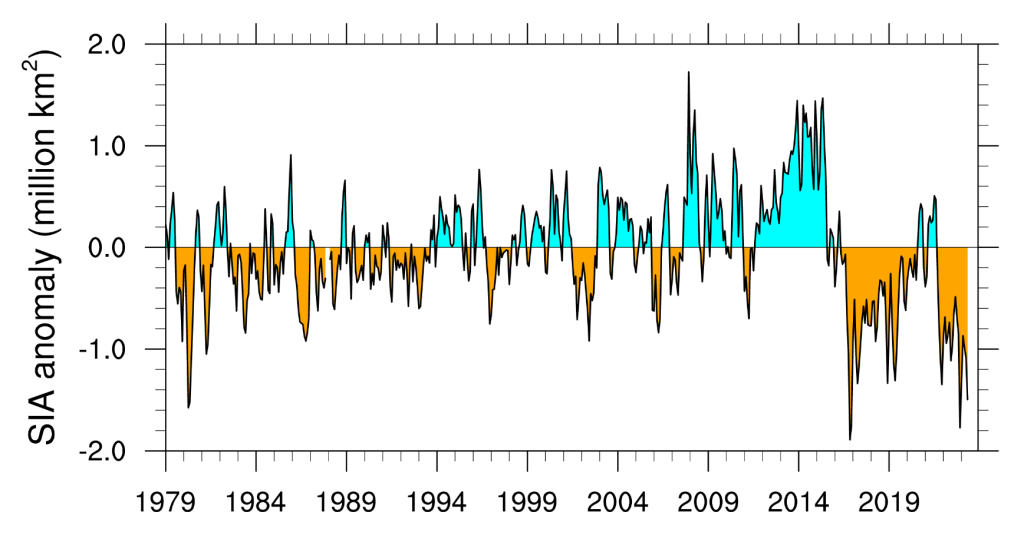Polar scientists call for urgent action in view of rapid Arctic and Antarctic change
16 June 2023 | sourced from World Meteorological Organisation (WMO)
Polar scientists are calling for an urgent intensification of national and international research and observational capabilities in view of rapid Arctic and Antarctic change.
Sea ice is reducing globally at an unprecedented rate, with serious implications for not only Earth’s polar environments and inhabitants but also global weather and climate.
In particular, Antarctic sea ice cover has been very low since 2016, with summer areas not observed since the beginning of satellite records in the 1970s – a phenomenon that is concerning the scientific community and one that is currently not well understood.

More than 60 experts from 41 institutions and 14 countries attended the annual meetings of the Scientific Committee on Antarctic Research/Climate and Cryosphere Sea ice Working Group and the Arctic Sea Ice Working Group after a four-year COVID-19 hiatus. Both groups are affiliated with the WMO co-sponsored World Climate Research Programme. The event was hosted by the Alfred Wegener Institute for Polar- and Marine Research.
It coincided with the Antarctic Treaty Consultative Meeting hosted by Finland in Helsinki. WMO Secretary-General Prof. Petteri Taalas highlighted the central role of the Antarctic in the global climate system and the importance of reductions in greenhouse gas emissions. The concluding Helsinki Declaration on Climate Change in the Antarctic stressed the global implications of climate change and the need for urgent action to protect Antarctica.
Recent Antarctic and Arctic events
Antarctic sea-ice extent reached another record low in February 2023 following the previous record low in February 2022, and an extremely low summer average in 2016/2017. This prompts grave concerns about the change in the state of Antarctic sea ice within the wider Earth system. Even now as mid-winter approaches, Antarctic sea-ice extent remains at record low values.
In 2022, for the first time in the observational record, Antarctic landfast ice experienced a significant loss. Hence, some coastal regions are now ice-free where they never were observed to be before.
Observations from novel autonomous instrumentations indicate increased contributions from ocean-sea ice-atmosphere interactions, such as wave damping and ice breakup, in reshaping the Antarctic sea ice.
2023 continued a pattern of low Arctic sea ice minima. The last 16 years (2007-2022) are the lowest 16 years in the 44-year satellite record.
A notable ice-free area opened near the North Pole in July 2022 and persisted for several weeks. Thinner, less compact sea ice has continued to replace older, thicker ice in this region over the last several years.
Call to immediate action
The polar scientists called for sustained long-term observatories and research to fill the information gaps in both polar sea-ice zones. Multi-national design and coordination are required to optimize field observations and research synthesis, as well as to deliver robust and impactful outcomes. These will provide information to increase our collective knowledge of Earth system processes.
There should be increased climate model-observation collaborations through the standardisation of sea-ice measurements, the standardisation of data representation and establishment of sea-ice Essential Climate Variables [ECVs], alongside ocean and atmosphere ECVs.


The Australian Antarctic Program Partnership is led by the University of Tasmania, with partner agencies CSIRO, Institute for Marine and Antarctic Studies, Bureau of Meteorology, Australian Antarctic Division, Geoscience Australia, Integrated Marine Observing System, and the Tasmanian Government.



